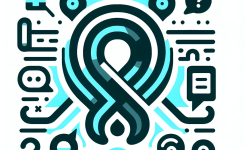Clear Communication
Clear communication is the cornerstone of any successful agile team. In an agile setting, team members need to convey information accurately and promptly. This includes everything from daily stand-up meetings where each member shares their progress, blockers, and plans for the day, to more in-depth discussions during sprint planning and retrospectives.
When communication is clear, misunderstandings are minimized. For example, developers can precisely understand the requirements set by product owners. Product owners, in turn, can communicate the vision and goals of the product in a way that the entire team can grasp. This clarity ensures that everyone is working towards the same objectives. Moreover, clear communication also extends to how team members interact with external stakeholders. By being able to communicate the team's progress, challenges, and achievements clearly, the team can manage stakeholder expectations effectively.
In addition, the choice of communication channels is also crucial. Agile teams often use a variety of tools such as instant messaging platforms, project management software, and video conferencing tools. Each channel has its own strengths and weaknesses. For instance, instant messaging is great for quick updates and informal discussions, while video conferencing is more suitable for in-depth meetings and presentations. By choosing the right communication channel for the right type of information, the team can ensure that communication remains efficient and effective.
Mutual Respect
Mutual respect is another vital skill in agile team collaboration. In an agile team, there are members with diverse skills, backgrounds, and perspectives. From developers with technical expertise to designers with a creative eye and product owners with a business mindset, each member brings unique value to the table.
Respecting each other's opinions and ideas is essential. When team members feel respected, they are more likely to contribute actively. For example, during a sprint planning session, a junior developer may come up with an innovative solution to a complex problem. If the team shows respect for this idea and gives it due consideration, it not only boosts the confidence of the junior developer but also opens up new possibilities for the project. On the other hand, if ideas are dismissed without proper evaluation, team members may become disengaged and less likely to share their thoughts in the future.
Mutual respect also means respecting each other's work styles and boundaries. Some team members may be more introverted and prefer to work independently for a certain period, while others may be more extroverted and thrive in collaborative environments. By understanding and respecting these differences, the team can create an inclusive and harmonious working atmosphere. This, in turn, leads to higher productivity and better team morale.
Adaptability
Agile development is all about adaptability. The nature of agile projects is such that requirements can change rapidly, and new challenges can emerge at any time. A team that can adapt quickly is more likely to succeed in this environment.

Adaptability requires team members to be open-minded and willing to learn. For example, if a new technology emerges that could significantly improve the development process, an adaptable team will be eager to explore it. They will not be stuck in old ways of doing things but will be willing to invest time in learning the new technology and integrating it into their workflow. This willingness to learn and adapt can give the team a competitive edge.
In addition, adaptability also means being able to adjust plans and priorities. In an agile project, the product backlog is constantly evolving. The team needs to be able to reprioritize tasks based on new information or changing business needs. This may involve dropping some tasks that are no longer relevant and focusing on new ones that have become more critical. By being flexible in this way, the team can ensure that they are always working on the most important aspects of the project.
Moreover, adaptability extends to how the team responds to setbacks. If a sprint does not go as planned, an adaptable team will not dwell on the failure but will instead analyze what went wrong and use the lessons learned to improve in the next sprint. This ability to bounce back from failures and make necessary adjustments is a key characteristic of a successful agile team.
Shared Goals
For an agile team to work effectively, they must have shared goals. Everyone on the team should be aware of what they are working towards and how their individual efforts contribute to the overall success of the project.
Shared goals provide a sense of direction and purpose. When team members understand the end goal, they can make more informed decisions. For example, during a development process, if the goal is to create a user-friendly and highly performant application, developers can make choices about the architecture and technologies that align with this goal. Product owners can also prioritize features based on how they contribute to the overall user experience and business objectives.
In addition, having shared goals promotes teamwork. Team members are more likely to collaborate and support each other when they know that they are all working towards the same outcome. For instance, if the goal is to meet a tight deadline for a product release, the different roles within the team, such as developers, testers, and designers, will work together more closely to ensure that all aspects of the product are ready on time. This sense of unity and shared purpose can drive the team to achieve great results.
Furthermore, shared goals also help in evaluating the team's performance. By having clear goals, it becomes easier to measure whether the team is on track or not. If the team is falling short of a particular goal, it can be used as an opportunity for reflection and improvement. This way, the team can continuously strive to better themselves and move closer to achieving their shared objectives.
In conclusion, these four team collaboration skills - clear communication, mutual respect, adaptability, and shared goals - are fundamental to the success of agile development teams. Clear communication ensures that information flows smoothly within the team and with external stakeholders. Mutual respect creates an inclusive environment where everyone feels valued and motivated to contribute. Adaptability allows the team to respond to changes and challenges effectively. And shared goals provide a sense of direction and purpose, promoting teamwork and enabling performance evaluation. Agile teams that master these skills are well-positioned to deliver high-quality products in a timely manner, meet the ever-changing needs of the market, and gain a competitive advantage in the industry. By continuously nurturing and improving these skills, teams can enhance their collaboration capabilities and achieve greater success in the realm of agile development. As the business landscape continues to evolve, the importance of these skills will only increase, making them essential for any team looking to thrive in the agile development paradigm.
ARTICLE TITLE :4 team collaboration skills in agile development ,AUTHOR :ITpmlib

















